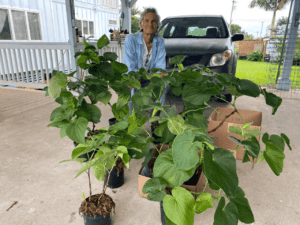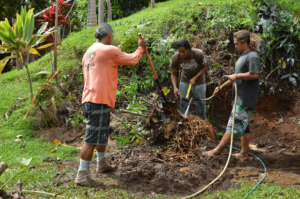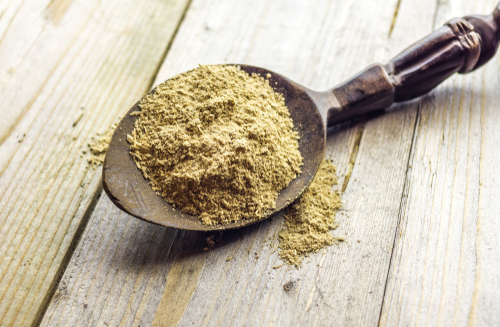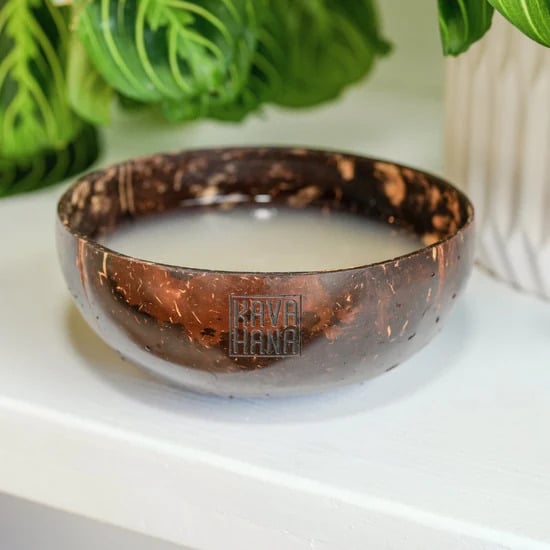Sourcing and propagation of kava
The first step of making kava powder is finding the best plants. Most farmers are intimately aware of the effects of their plants. Since kava is unusual in that it doesn’t have flowers or seeds, it’s only propagated through the root. Farmers will test the root of each plant to be sure they like the effect before planting it. This eliminates plants that are poor quality and ensures that only the best kava cultivars are continued.

Farmers will take the root of the kava plant and trim it down to 3-4 inch pieces that are directly planted into the ground. It takes a plant 3-5 to grow from a root cutting to maturity. The older the plant, the more valuable it is based on the robustness of its kavalactone profile and strength of effects.
Because the demand for kava has grown so dramatically, the process has slightly changed to using a nursery to grow seedlings. Once they’ve grown to a certain level, they are transplanted into the ground. This allows for more kava propagations to happen more quickly without sacrificing quality.
Harvesting and drying the roots for kava powder
When plants reach maturity, the whole plant is pulled from the ground. The stems will be used for new cuttings, and the roots are washed to get rid of any soil and dirt and the outer layer peeled for drying. Kava roots dry best in a place where it’s shady and doesn’t get too hot. This can be in drying houses, corrugated metal or plastic sheets, or roofing panels. They need to be rotated regularly to ensure mold doesn’t grow and that all parts of the root have the chance to dry out.

Once the roots are completely dry they are pounded or ground into a powder that is ready to drink or to export. The process of how kava is ground or pound is different from island to island. On Vanuatu, kava is ground down using a limestone slab, while some other islands us a mortar and pestle.
The local spirit of kava farming
Unlike many farms in North America where we think of large scale operations, kava farming is much more local and small scale. Despite the increase in demand, kava farming has changed only slightly; keeping to their model of local farmers who propagate, grow, harvest and pound the kava. It is one of the things that keeps kava culture and tradition strong and ensures the quality of kava being produced stays high.
Be sure to check out our article about the kava plant and traditions around kava to learn more.


